This is the second part of an article all about how champagne ages and how you can avoid wasting your money by keeping champagne too long until it has no bubbles and is completely undrinkable.
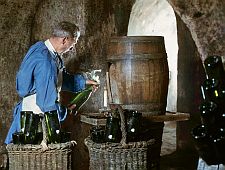 As we have already seen, before a bottle of champagne can be sold to you the yeast sediment is removed from the bottle of champagne by the process called disgorging (dégorgement in French). When that happens Autolysis stops and oxidisation takes over producing a rather different effect on the champagne.
As we have already seen, before a bottle of champagne can be sold to you the yeast sediment is removed from the bottle of champagne by the process called disgorging (dégorgement in French). When that happens Autolysis stops and oxidisation takes over producing a rather different effect on the champagne.
That doesn’t mean that the champagne stops ageing altogether; on the contrary, if anything oxidisation speeds up the ageing process. Oxidisation is the effect that oxygen has on the wine and it takes place more rapidly after disgorging because the champagne is no longer protected by the CO2 inside the bottle. The flavours and aromas can become more intense and richer during oxidisation; the biscuit and toasty notes that for many people are the hallmark of good champagne, can become more pronounced.
However, it’s important to remember that oxidisation certainly doesn’t suit everyone. It is essentially a process of decay and when it goes beyond a certain point the champagne is ruined.
The best analogy I can think of is when game, such as pheasant for example, is left to hang for several days, or longer, before being cooked and eaten. The flavours become much more pungent and pronounced. Some people adore this but others find it just too strong to the point that it spoils their enjoyment of the meat entirely.
The trick then is to keep your champagne just the right amount of time and to avoid keeping it too long and finding, when you open it, that it has turned dark brown, has lost its bubbles and tastes more like vinegar than champagne.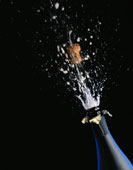
Unfortunately this is all too common. I have lost count of the number of people who have told me that they were given a special bottle of champagne on their wedding day, or on the day of their child’s birth and that they can’t wait to open it on their 21st anniversary, or on the child’s 21st birthday. That’s way too long and they are almost sure to be disappointed.
So here’s what to do.
There’s one approximate way and one more precise way.
I’ll tell you both
- The general rule of thumb is that you can keep champagne, after disgorging, for about the same length of time as it spent ageing in the cellars before disgorging. So let's say between 2 and 3 years for non-vintage and 5 to 7 years for a vintage.
However, and this is very important, the rule above only applies if you have good storage conditions at home. If you keep your wine in the kitchen, in the fridge, in the garage, under stairs or wherever, it won’t keep well and the best advice is to drink it within a few months of purchase. - If you want to be more precise then you need to know the date of disgorging. When you know that you simply count forward to today’s date and you know exactly how much time has passed since the precious lees were taken out of the bottle.
But where do you find that disgorging date?
Unfortunately this is another piece of information that very few brands actually share with you. They know this date themselves but they don’t trust consumers with the information for fear, amongst other things, that the consumer will think it is a ‘Best By’ date and conclude that the bottle is ‘out of date’. However for people such as you who are more interested in champagne than the average consumer, you’d find this really useful.
Fortunately there is an increasing number of champagne producers, mainly amongst the grower champagnes, who have the good sense to put the disgorgement date on the bottle. Let’s look at an example.
Champagne De Sousa
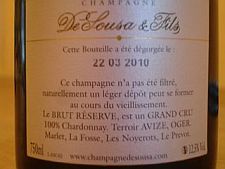 You’ll see from this back label that this bottle was disgorged on 22nd March 2010, so when I drank it on 21st March 2011 I knew it was one year since the disgorging and the champagne should be just right to drink - it was by the way.
You’ll see from this back label that this bottle was disgorged on 22nd March 2010, so when I drank it on 21st March 2011 I knew it was one year since the disgorging and the champagne should be just right to drink - it was by the way.
On the other hand if I was in a shop in 2014 and was thinking about buying this bottle, I'd know that it had been hanging around quite a long while since disgorging and would probably have lost some of its freshness. I'd think twice before buying it unless I knew for sure that it had been kept in perfect storage conditions. Then, but only then, I might give it a try.
So look out for the disgorgement date somewhere on the label. You may not always find it, in fact it's still only a minority of makers who do put this date on their bottles, but it is becoming more common and one day it might even become the norm. Let’s hope so.
Meanwhile... Stay Bubbly
Jiles


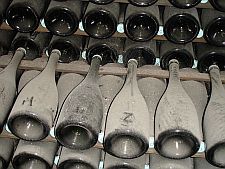 With champagne, unlike most wines, there are two distinct ageing periods that you need to take into consideration: the first is the time spent ageing in the bottle before it leaves the cellars in France and the second is the time from then on until you actually drink it.
With champagne, unlike most wines, there are two distinct ageing periods that you need to take into consideration: the first is the time spent ageing in the bottle before it leaves the cellars in France and the second is the time from then on until you actually drink it. 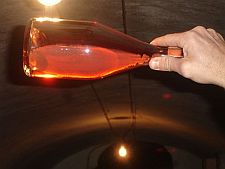 same rules. For non-vintage champagne it’s 15 months and for 12 months of that time the champagne must be allowed to age in the cellars with the lees in the bottle.
same rules. For non-vintage champagne it’s 15 months and for 12 months of that time the champagne must be allowed to age in the cellars with the lees in the bottle.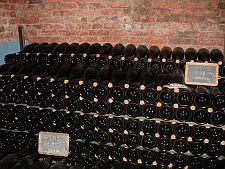 Oxidisation will also produce richer, deeper flavours in the wine up to a certain point, but it is also the process, if carried too far, that will turn the wine into vinegar.
Oxidisation will also produce richer, deeper flavours in the wine up to a certain point, but it is also the process, if carried too far, that will turn the wine into vinegar.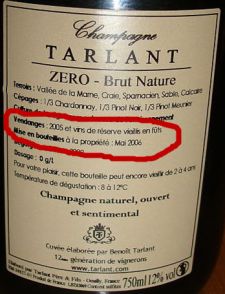 It would be nice to think that the champagne makers put this information on the back label and there are a few of the more enlightened ones that are doing just that. Take champagne Tarlant for example. They have some of the most informative back labels in the business
It would be nice to think that the champagne makers put this information on the back label and there are a few of the more enlightened ones that are doing just that. Take champagne Tarlant for example. They have some of the most informative back labels in the business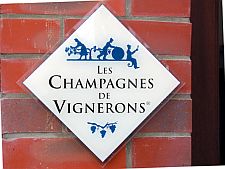 I recently ran a small survey on my Facebook page and on LinkedIn asking people what the phrase Les Champagnes de Vignerons meant to them.
I recently ran a small survey on my Facebook page and on LinkedIn asking people what the phrase Les Champagnes de Vignerons meant to them.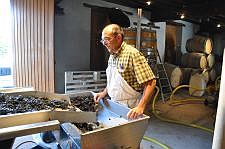 There are no criteria about quality, size of production or anything else for that matter. It appears you just have to persuade the Syndicat that the champagne is made in smallish quantities, and that the maker was directly and to a significant degree, involved in making the champagne.
There are no criteria about quality, size of production or anything else for that matter. It appears you just have to persuade the Syndicat that the champagne is made in smallish quantities, and that the maker was directly and to a significant degree, involved in making the champagne.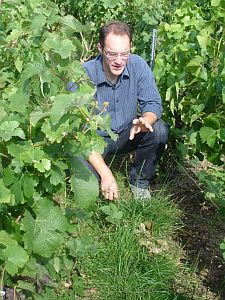 Many people said that they associated Les Champagne de Vignerons with good value for money. This is true from the consumers’ point of view, but not necessarily from the producer’s point of view. They would love to sell their product at the same prices as the big brands.
Many people said that they associated Les Champagne de Vignerons with good value for money. This is true from the consumers’ point of view, but not necessarily from the producer’s point of view. They would love to sell their product at the same prices as the big brands. Have you ever seen people open a champagne bottle with a sabre? It looks pretty impressive doesn’t it? Yet when it comes to doing it yourself, it’s something that most people are really apprehensive about
Have you ever seen people open a champagne bottle with a sabre? It looks pretty impressive doesn’t it? Yet when it comes to doing it yourself, it’s something that most people are really apprehensive about Champagne Philippe Brugnon in tucked away in a quiet street in the village of Rilly-La-Montagne and you’d never find it unless you knew where to go. There’s no sign on the gate, or the door and everything is very low key. Inside however you are in for a treat.
Champagne Philippe Brugnon in tucked away in a quiet street in the village of Rilly-La-Montagne and you’d never find it unless you knew where to go. There’s no sign on the gate, or the door and everything is very low key. Inside however you are in for a treat. I came across a weird machine the other day.
I came across a weird machine the other day.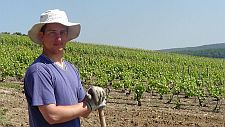 Take a look at the video and see if you can guess what they are doing before the answer appears on the screen.
Take a look at the video and see if you can guess what they are doing before the answer appears on the screen.